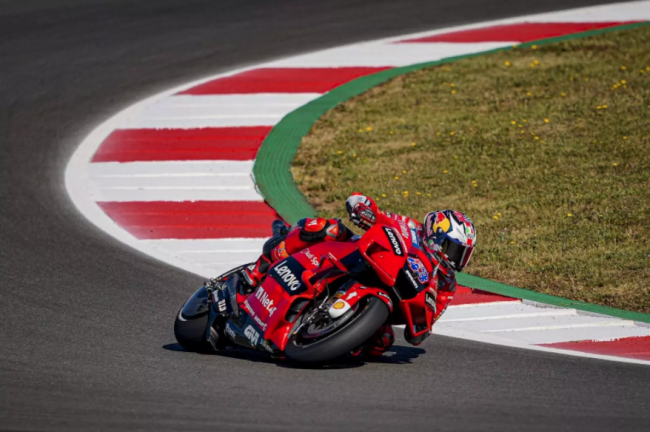--News Direct--

It can seem like a paradox: Motorcycle racing gets faster and faster, but at the same time, it’s getting safer.
When you’re tearing up a racetrack at speeds as high as 225 mph, danger is a fact. And when you’re a MotoGP racer, crashing is par for the course. But technology is helping to make crashes safer for riders, so MotoGP can stay fast and fearless.
Lenovo’s powerful analytics tools are helping Ducati make smart decisions about tire consumption on the track, so riders can safely go the distance. High performance computing allows for better, safer modeling of race conditions. And that’s just the beginning.
Where the races of the 1990s would send half the riders to the hospital over the course of the year, technology has remade the landscape, explains Gabriele Conti, the Electronics Systems Director for Ducati Corse, the motorcycle company’s racing arm.
“Now, the crashes aren’t nearly so dangerous, largely because of the help we get from technology and electronics,” said Conti.
Safety shapes the bike from the engine valve design to the fuel it burns. Technology helps Ducati racers control almost every aspect of the bike during a race, avoiding crashes that were once simply unavoidable. Riders can be cued if they’re going too fast to stay in control; they can learn to reduce power to avoid falls.
“Back then,” Conti explained, “we didn’t have any electronics helping us with this, so if you missed a turn or an engine light, you’d crash. Now, electronics control every piece of the bike.”
Lenovo technologies have been vital in the development of new safety innovations, Conti said.
With the massive processing power of Lenovo ThinkStations and servers and potent AI and machine learning tools, Ducati engineers can predict performance and troubleshoot problem spots. The bikes themselves are outfitted with an array of sensors that provide engineers with a treasure trove of information on practice rides and races.
From their simulations, engineers develop strategies to help riders make the best choices.
Take Losail in Qatar. It’s a desert track: sand, dust, humidity and heat are part of the ride. They change the behavior of the tires, the braking control, and the speed with which the engine burns fuel.
“Fuel consumption changes in different humidity,” Conti explains. “If you use too much, you can’t finish the race. If you use too little, you won’t have enough speed.”
With machine learning simulations, Ducati can test the bike’s reaction before it ever sees Losail. And the predictive power of technology is helping to protect the very bodies of the riders.
Riders don advanced protective armor built to absorb shocks while also allowing freedom of motion. And since 2019, MotoGP has required in-suit airbags for riders.
These, too, draw on the bike’s army of smart sensors. They rest in a vest hooked up to the sensors. An algorithm pulls data from the sensors to predict a crash and inflate the bags crucial milliseconds before the rider ever hits the ground.
All this helps explain why MotoGP racing has seen fatalities and injuries decline steeply since the sport’s beginnings in 1949 – a recent study found only 3.8 injuries per 1000 race kilometers. Serious injuries, the study concluded, are rare.
With the power of technology along for the ride, everyone benefits.
And that’s all while racing is getting faster than ever, with the three records for top MotoGP speeds all set in 2021. When that kind of speed meets safety advancements on the track, it’s impossible to look away.
View additional multimedia and more ESG storytelling from Lenovo on 3blmedia.com
View source version on newsdirect.com: https://newsdirect.com/news/lenovo-technology-helps-ducati-with-new-safety-innovations-107420180














